From Petrobras ordering another FPSO to module installations, below is a compilation of the latest headlines in the E&P space within the past week.
Activity headlines
Berkine South fields begin production in Algeria
Eni announced production has begun at its fast-track Berkine Sud project in Algeria. The two new gas fields have a production capacity of 1 MMcm/d of gas and 4,000 bbl/d of associated liquids. According to Eni, the capacity is expected to increase to 2 MMcm/d by year’s end, to reach the full potential of the 11 MMcm/d MLE gas treatment plant.
The two gas fields began production six months after the contract was awarded, Eni said. Eni and Sonatrech operate the project.
Commercial gas at Hermes off Israel
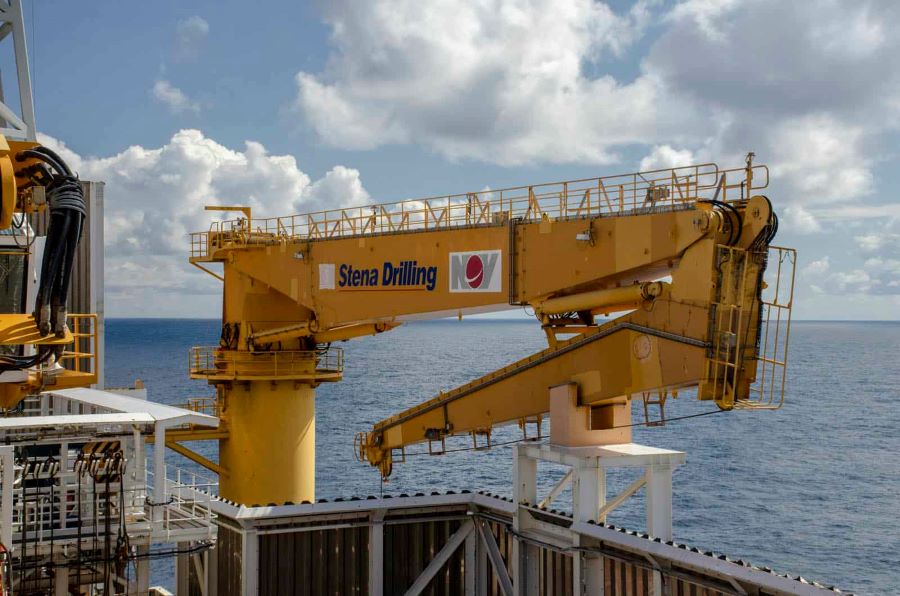
Energean reported a commercial gas discovery of between 7 and 15 Bcm, based on preliminary estimates, at the Hermes exploration well offshore Israel. Energean said the discovery in Block 31 has helped to de-risk the nearby Poseidon and Orpheus structures, which represent potential future appraisal targets to fully assess the potential of the area around the block.
The Stena IceMax drilled the Hermes exploration well and has moved to Block 12, known as the Olympus area, to drill at Zeus. Energean estimates Zeus holds 10 Bcm-12 Bcm of gross prospective unrisked gas resources. Overall, Energean estimates the entire Olympus area holds around 58 Bcm of unrisked recoverable resources.
Energean has also exercised its option to drill a sixth well with Stena Drilling Limited as part of the current drilling campaign. This well is expected to target the Hercules prospect, located on Block 23, offshore Israel.
Recently, Stena announced CNOOC Africa had signed a contract for about 90 days for two wells starting in the first quarter of 2023 for the Stena IceMax for work off the coast of Gabon.
MDSM, DES installed on ACE’s PDQ deck
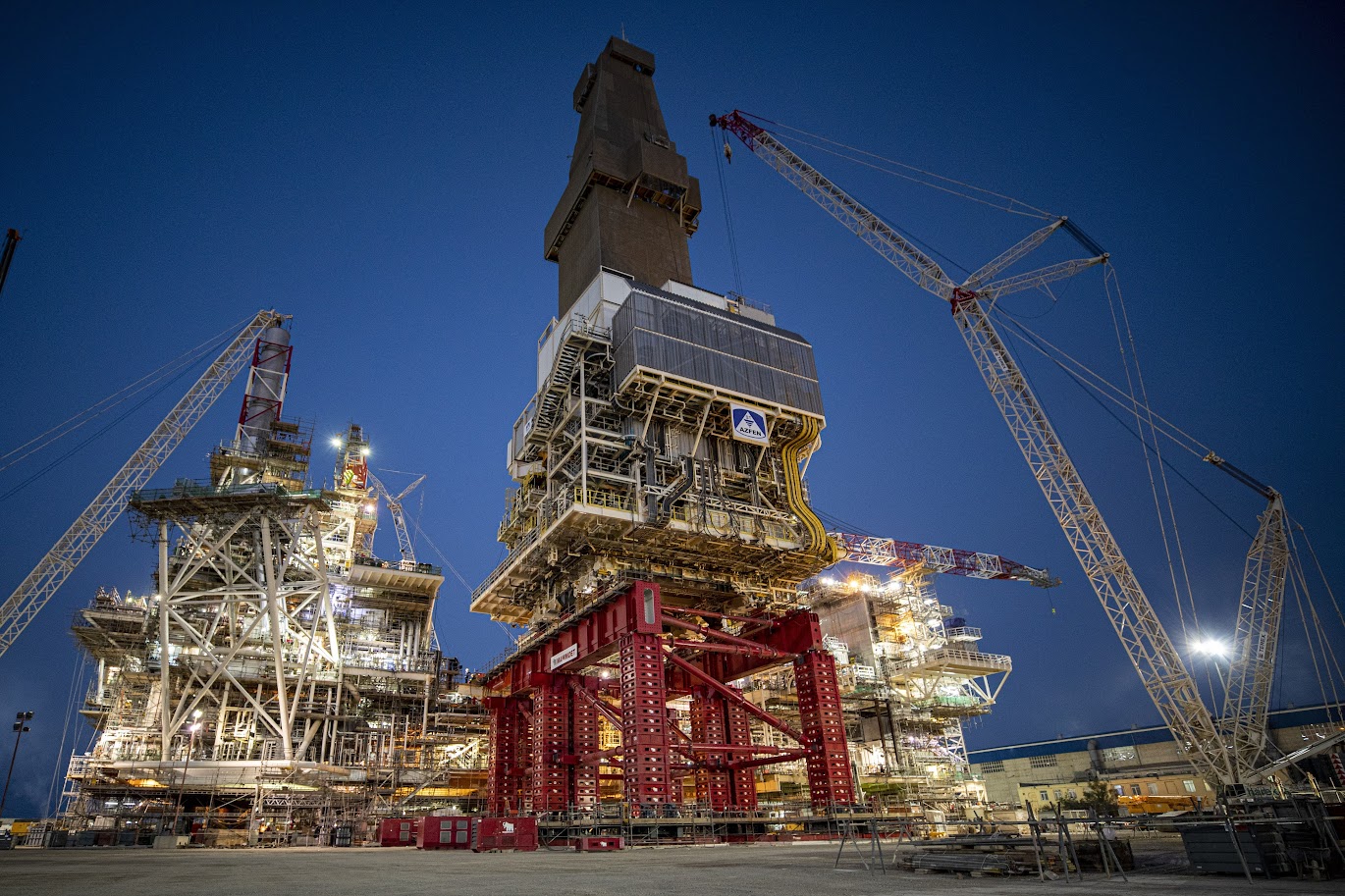
During a seven-week operation, Mammoet transported, jacked up and skidded two large modules onto the deck for the Azeri Central East (ACE) development project in the Caspian Sea.
ACE is part of the latest development for the Azeri-Chirag-Deepwater Gunashli (ACG) field, operated by BP and located offshore Azerbaijan. The project called for a Modular Drilling Support Module (MDSM) and Drilling Equipment Set (DES) to be installed on the deck of the project’s Production, Drilling and Quarters (PDQ) platform.
A joint venture between Turkish EPC Tekfen and the State Oil Company of Azerbaijan (SOCAR) prefabricated the MDSM and DES.
Mammoet’s scope ranged from performing the detailed engineering study for the integration of the modules to the physical integration.
The DES module is 32 m long, 22 m wide and 80 m high and weighs 2,400 tons, while the MDSM module is 43 m long, 20 m wide and 20 m high and weighs 2,350 tons.
The integration started with weighing the MDSM module. Next, it was jacked up using Mammoet’s Mega Jack 800 system, so two modular jacking beams could be moved underneath it. Mammoet’s heavy skidding system, comprising six 800-ton skid shoes and a skid track, was installed on top of the beams. The combination was positioned onto 120 axle lines of SPMT, so it could be moved from its fabrication location 100 m across the site toward the platform.
The combination was then placed above the Mega Jack 800, which was preinstalled beside the platform. The combination was jacked-up to a height of 15 m and the MDSM was skidded onto the platform.
An additional set of skidding equipment was then used to skid the module in a transverse direction, toward its final position. The module was then transferred onto hydraulic jacks for final set down. Once the operation was completed, the team repeated the process with the DES module.
Mammoet will return for the final stage of the project, which will involve the jack-up and load-out of the complete PDQ platform, which is expected to weigh 20,750 tons. Mammoet’s largest jacking system – the Mega Jack 5200 – will be used for the operation, which is scheduled to take place in 2023.
Sleipnir lifts Tyra process module into place
Norwegian Energy Co. (Noreco) announced the successful offshore lift of the Tyra II process module for the Tyra redevelopment project in the Danish North Sea.
Heerema Marine Contractors' Sleipnir crane vessel lifted and installed the 17,000-metric-ton process module onto the waiting jackets. All eight platforms are now in their final position. Over the coming weeks, Sleipnir will lift and install two bridges and the flare for Tyra II, completing the project's final offshore lifting and installation campaign.
“After a month-long voyage from Batam to the Danish North Sea, the 17,000 tons module was safely lifted and installed by Sleipnir less than 24 hours after its arrival at the Tyra field, which is ahead of plan. The lift itself broke a world record, as the heaviest crane lift conducted at sea,” said Noreco COO Marianne Eide. “With remaining execution taking place solely at the Tyra field, we are today several steps closer to a near-doubling of production from the DUC with Tyra onstream next winter."
The Tyra Redevelopment project represents the largest oil and gas investment in the Danish North Sea. Once the redeveloped Tyra II is back on stream, it is expected to deliver 2.8 Bcm/year of gas, which amounts to 80% of the forecasted Danish gas production. Noreco said peak production is expected at 300 MMcf/d from Tyra and five unmanned satellite fields.
TotalEnergies operates the project on behalf of partners Noreco and Nordsøfonden.
Contracts and company news
Petrobras orders P-82
Petrobras awarded Sembcorp Marine Rigs & Floaters a contract for the construction of the P-82 platform for the Búzios pre-salt project in the Santos Basin.
The P-82 FPSO will have the capacity to produce up to 225,000 bbl/d, process up to 12 MMcm/d of gas, and store more than 1.6 MMbbl when it goes online in 2026. The project calls for nine production wells and seven injection wells.
The P-82 will be the tenth platform to be installed in the Petrobras-operated Búzios field.
Petrobras recently ordered the P-83 from Keppel Shipyard. Petrobras operates the field with 92.6% interest on behalf of partners CNOOC and CNODC with 3.7% each.
OBN collected on NCS, deliverables in 4Q 23
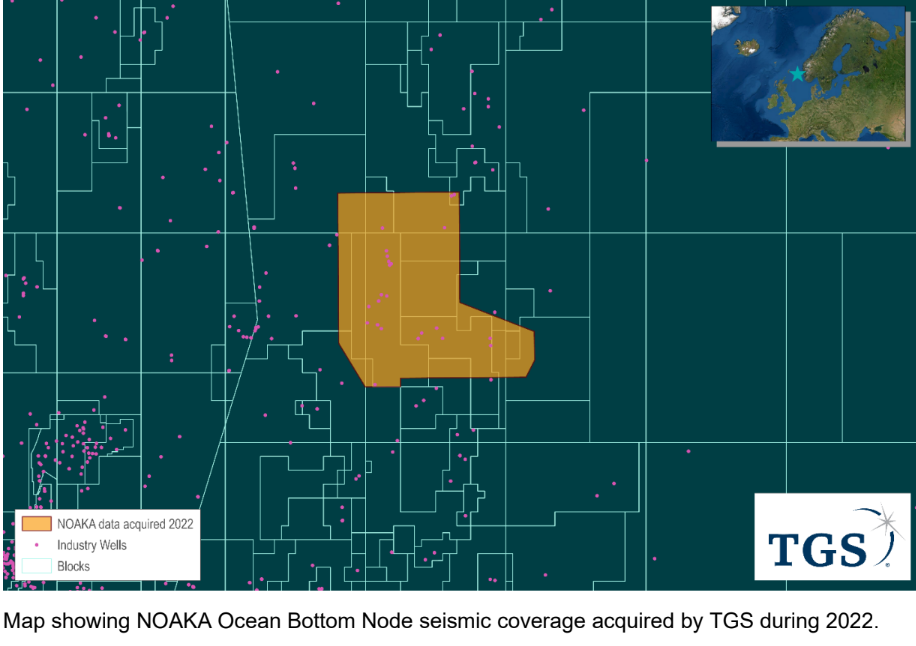
TGS said it wrapped up acquisition of dense Ocean Bottom Node (OBN) seismic in the NOAKA region of the Norwegian Continental Shelf (NCS) two weeks ahead of schedule.
The NOAKA22 survey extended OBN coverage in the region by 318 sq km (area under receiver) and brings TGS to a total of 475 sq km of OBN acquired in the region during 2022. This includes completing the remaining part of the NOAKA21 survey that started last year.
TGS said imaging will use full azimuth and ultra-long offsets to understand and illuminate the geology in the region. In addition, the company said, multicomponent processing will lead to stable low frequencies, high signal-to-noise ratios, reliable AVO, and the ability to distinguish between structure and attribute anomalies for field development and near-field exploration.
This project was supported by industry funding, and TGS anticipates final processing deliverables in the fourth quarter of 2023.
Valeris announced contract extensions
Valaris said it has received $95 million in contract extensions and options
TotalEnergies EP Brasil exercised an option for drillship VALARIS DS-15. The option has an estimated duration of 100 days.
Saudi Aramco extended three contracts. The Valaris 76 jackup has been extended 292 days.
The Valaris 54 jackup has been extended by 204 days, and the Valaris 108 jackup has been extended by 142 days.
BP exercised a four-well option for the Valaris 118 jackup for an estimated 200 days of work offshore Trinidad.
Blackford Dolphin wins Nigeria work
Dolphin Drilling announced a one-year contract valued at $96 million with Nigeria-based General Hydrocarbons Limited.
The contract for the Blackford Dolphin rig begins in the fourth quarter of 2022. It has completed work in the Gulf of Mexico for Pemex and will mobilize to Las Palmas for a periodic survey before beginning operations in Nigeria.
ADC for Petronas rig integrity work
Petronas Carigali has awarded ADC Energy Ltd.’s local partner, Onyx IES a three-year contract for rig integrity and inspection services. The scope of work ADC Energy will provide includes inspection and operational assurance audits of mobile offshore drilling units for Petronas’ domestic assets.
Hybridizing energy for Seven Arctic
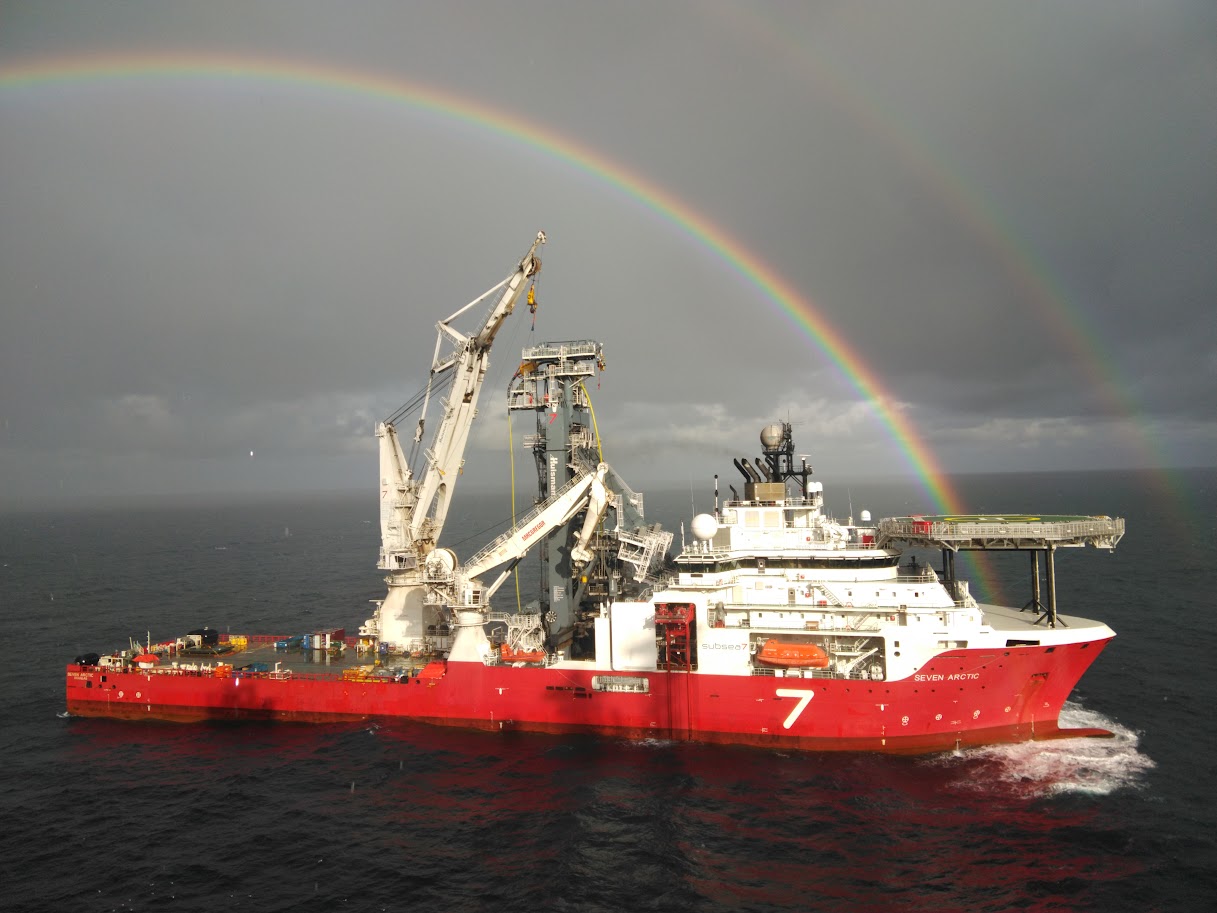
Subsea7 said it will equip the Seven Arctic with a new energy-saving system that will hybridize the heavy construction/flex-lay vessel.
The DP3 Seven Arctic has total installed power of 27 MW and can work in water depths to 3,000 m.
The new energy-saving and storage system features a containerized battery room with a maximum power of 3750 kW and 1250 kWh of energy. The system also includes a connection for shore power.
Subsea7 expects a reduction of 5,000 tons of CO2 emissions based on the vessel’s operating profile.
Subsea7 awarded the contract for supplying and fitting the system to Bakker Sliedrecht, an electrical integrator specialist for DP vessels.
Wintershall wins Luna CO2 storage license
The Norwegian Ministry of Petroleum and Energy has awarded Wintershall Dea the operatorship of the Luna CO2 storage license in Norwegian North Sea.
According to Wintershall, the license holds storage potential of more than 5 million tonnes of CO2 per year.
Winterhsall also plans to build a CO2 hub in Wilhelmshaven, CO2nnectNow, on the German North Sea coast to enable the collection and transport of carbon dioxide.
Wintershall operates the Luna license with 60% interest on behalf of partner CapeOmega with 40% interest.
HHI gets ABS nod for autonomous functions
ABS has approved in principle Hyundai Heavy Industries (HHI) Group for autonomous functions: navigation, machinery health management, fire fighting management and network infrastructure
“ABS understands that autonomous technologies are not stand-alone products but fully integrated with vessel infrastructure and the result of numerous advancements in a wide variety of mechanisms including sensors, imaging, connectivity, machine learning and more. When used in vessel operations, autonomous functions have the potential to increase safety by reducing human error,” said Patrick Ryan, ABS Senior Vice President, Global Engineering and Technology.
Neptune picks CHC Helicopters in Dutch sector
Neptune Energy announced it had awarded a $53-million contract to CHC Helicopters for offshore transport in the Dutch North Sea. Under the deal, CHC will provide regular transport to and from the 29 offshore platforms Neptune operates in the Netherlands.
The contracts are part of a longer-term alliance agreement with CHC that will enable optimized flight scheduling and route planning, and reduce the total number of offshore flights.
Regulatory updates
GoM lease sale comments sought
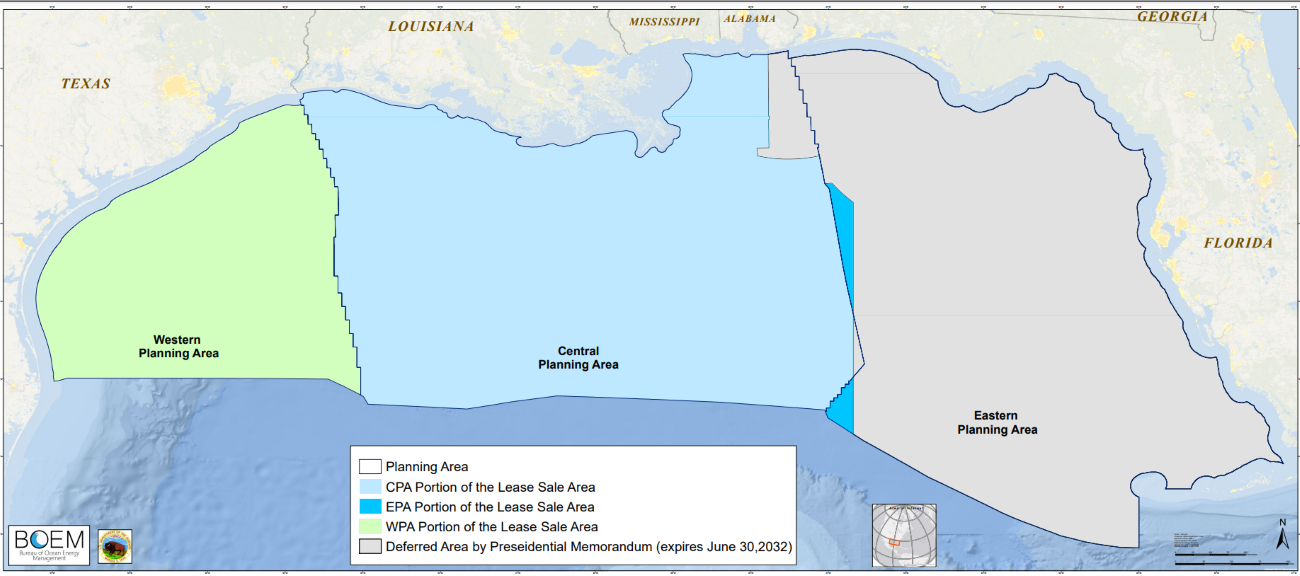
The Bureau of Ocean Energy Management (BOEM) is seeking comments on its Draft Supplemental Environmental Impact Statement (EIS) for two Gulf of Mexico oil and gas lease sales.
The draft supplemental EIS supports Lease Sales 259 and 261.
BOEM will hold virtual meetings at 4 p.m. Central Time on Oct. 24 and 1 p.m. Central Time on Oct. 26 to provide information about the Draft Supplemental EIS and to take public comments.
Written comments can be made at www.regulations.gov regarding docket number BOEM-2022-0048. Comments are due by 11:59 p.m. Eastern Time on Nov. 21, 2022.
North Sea CO2 storage permits awarded
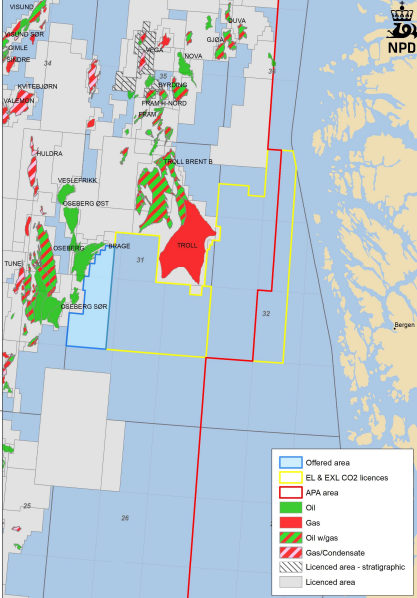
The Norwegian Ministry of Petroleum and Energy has awarded Wintershall Dea Norge and CapeOmega an exploration license for CO2 storage in the Norwegian North Sea.
The permit is offered with a binding work program that ensures both rapid and efficient progress, or return of the areas if project development should come to a halt, according to the ministry.
The blocks in question are 31/4 and 31/7.
Phase 1 work, expected to last a year, includes acquiring 3D seismic, seismic reprocessing and G&G studies including development of 3D geo- and reservoir models, and subsurface risk mitigation studies including description of potential leakage paths for injected CO2. At the end of the phase, the partners will decide whether to drill a wildcat or appraisal well or drop the project.
During the two-year phase 2, work includes drilling the well, considering an injection test, carrying out conceptual field development studies and selecting the preferred development concept or dropping the project.
During the third phase, lasting a year, the partners are expected to prepare a plan for development and operation, make final investment decision and submit the plan for development and operation or drop the project.
Wintershall will operate with 60% interest on behalf of partner CapeOmega with the remaining 40% interest.
This is the third time acreage has been awarded to store CO2 pursuant to the CO2 Storage Regulations and the fourth acreage awarded to store CO2 on the Norwegian continental shelf.
Australia aims to streamline decommissioning approvals
Because the need to decommission aging oil and gas infrastructure is expected to speed up offshore Australia, the government is seeking partners to investigate how to streamline decommissioning approvals.
Australia’s National Offshore Petroleum Safety and Environmental Management Authority (NOPSEMA) and Department of Climate Change, Energy, the Environment and Water (DCCEEW) want partners for a collaborative project to evaluate options to streamline the assessment of proposals for decommissioning of offshore petroleum facilities.
Currently falling under both the Offshore Petroleum and Greenhouse Gas Storage (OPGGS) (Environment) Regulations 2009 and the Environment Protection (Sea Dumping) Act 1981, the project is aimed at understanding the technical, legal, policy and administrative feasibility of full or partial streamlining of assessments.
It is also intended that the streamlining could help reduce regulatory overlap and improve consistency, all while maintaining the desired environmental outcomes.
This first phase will take the form of a trial in which NOPSEMA will provide technical advice to support DCCEEW’s assessment of sea dumping permit applications for decommissioning projects that are regulated in parallel with environment plans under the OPGGS (Environment) Regulations.
NOPSEMA has invited interested parties to reach out via communications@nopesema.gov.au.
Recommended Reading
US Drillers Cut Oil, Gas Rigs for Second Time in Three Weeks
2024-02-16 - Baker Hughes said U.S. oil rigs fell two to 497 this week, while gas rigs were unchanged at 121.
US Drillers Cut Oil, Gas Rigs for Third Week in a Row
2024-04-05 - The oil and gas rig count, an early indicator of future output, fell by one to 620 in the week to April 5, the lowest since early February.
US Drillers Add Oil, Gas Rigs for First Time in Five Weeks
2024-04-19 - The oil and gas rig count, an early indicator of future output, rose by two to 619 in the week to April 19.
US Drillers Cut Oil, Gas Rigs for Fourth Week in a Row-Baker Hughes
2024-04-12 - The oil and gas rig count, an early indicator of future output, fell by three to 617 in the week to April 12, the lowest since November.
US Gas Rig Count Falls to Lowest Since January 2022
2024-03-22 - The combined oil and gas rig count, an early indicator of future output, fell by five to 624 in the week to March 22.

